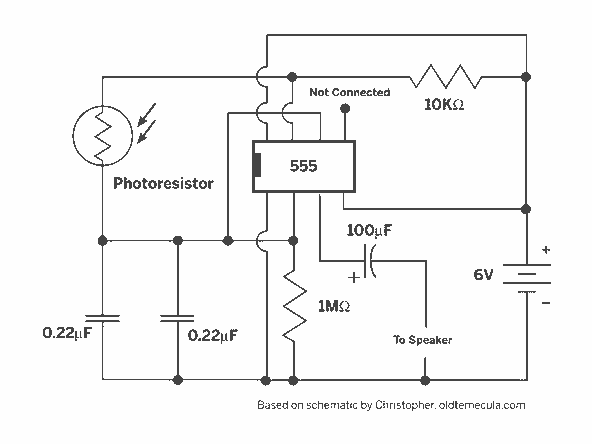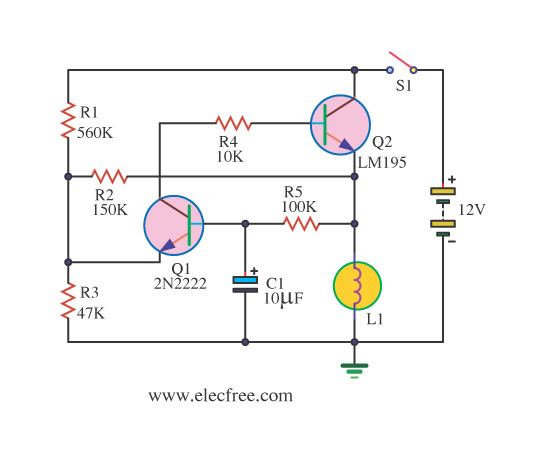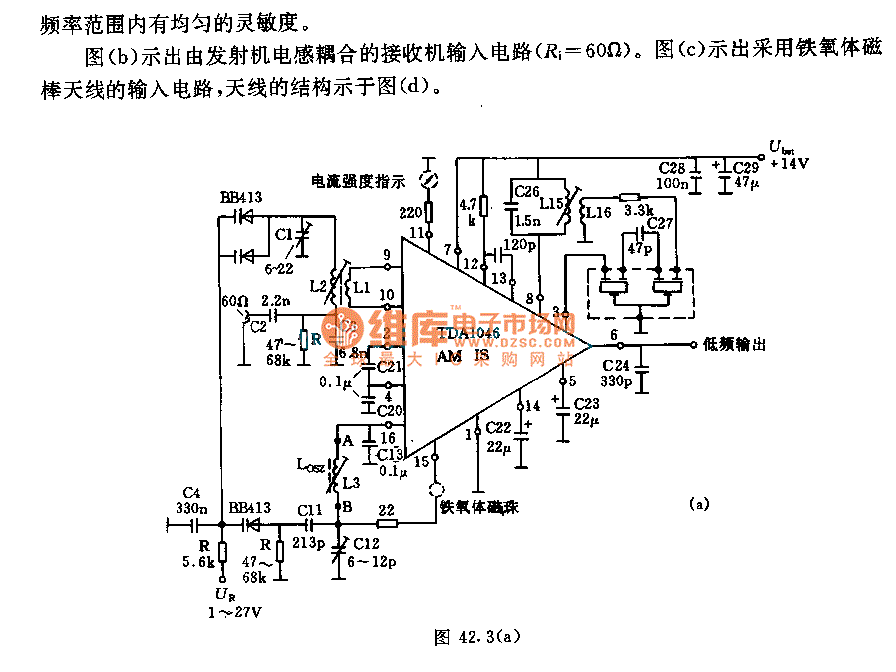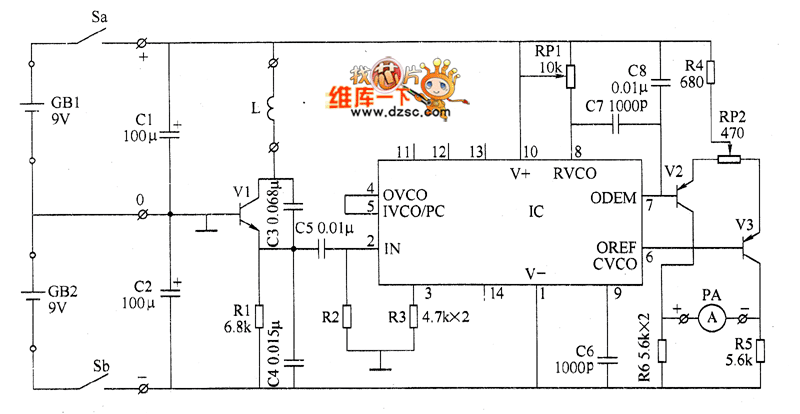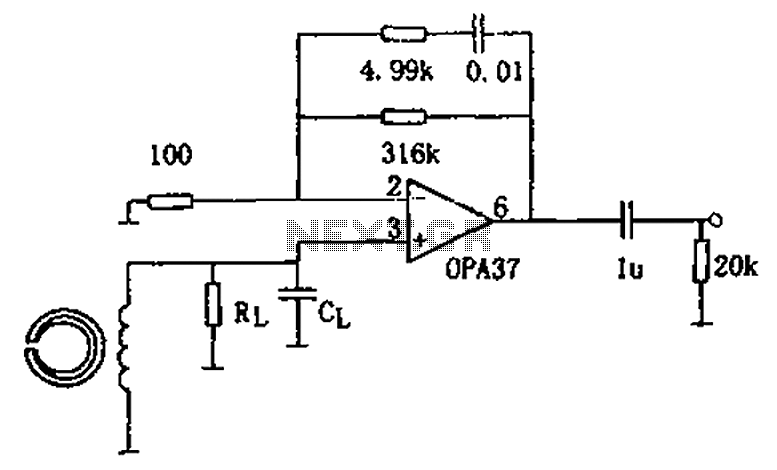
The battery voltage is low frequency amplifying circuit diagram 1v
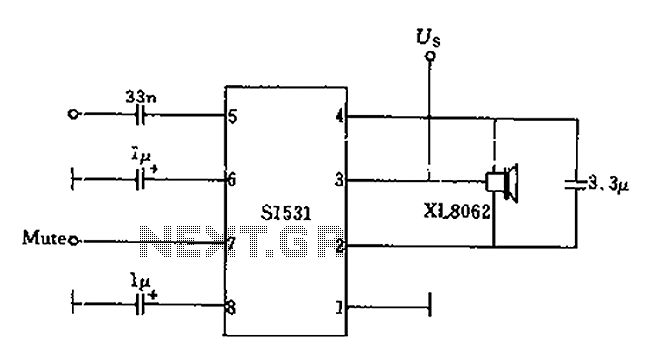
The battery voltage is 1V for a low-frequency amplifying circuit, which can operate with a power supply voltage ranging from 1V to 1.7V, making it suitable for use with small batteries. The circuit provides an output power of 80mW with an efficiency of 48%. It is designed to drive intermediate tap speakers with an impedance of 4 ohms in a dual configuration, utilizing a battery voltage of 1.2V for the integrated circuits (ICs).
The low-frequency amplifying circuit is engineered to function efficiently within a minimal voltage range, making it particularly advantageous for portable applications where space and power supply options are limited. The circuit architecture typically includes a differential amplifier stage followed by a class D amplifier stage, ensuring high efficiency and low power consumption.
Key components of the circuit include operational amplifiers or dedicated audio amplifier ICs, which are chosen for their low voltage operation and high performance. The output stage is configured to drive speakers with a nominal impedance of 4 ohms, allowing for effective sound reproduction in compact audio devices.
The power supply design incorporates bypass capacitors to stabilize the voltage and minimize noise, enhancing audio quality. Additionally, the circuit may integrate feedback mechanisms to optimize gain and reduce distortion, ensuring that the output signal remains faithful to the input audio source.
This low-voltage amplifying circuit is particularly suitable for applications in portable audio devices, such as small radios, handheld speakers, or any battery-operated sound system where efficiency and compactness are critical. The ability to operate effectively at voltages as low as 1V opens up possibilities for innovative designs in consumer electronics, where conventional power sources may not be feasible. As shown in the battery voltage is 1v low frequency amplifying circuit, the circuit can operate at 1 ~ 1.7V power supply voltage, it can be powered by small batteries. Output p ower is 80mW, 48% efficiency. Adapted to drive the intermediate tap speaker (4 ohms X2), the battery voltage is 1.2V ICs.
The low-frequency amplifying circuit is engineered to function efficiently within a minimal voltage range, making it particularly advantageous for portable applications where space and power supply options are limited. The circuit architecture typically includes a differential amplifier stage followed by a class D amplifier stage, ensuring high efficiency and low power consumption.
Key components of the circuit include operational amplifiers or dedicated audio amplifier ICs, which are chosen for their low voltage operation and high performance. The output stage is configured to drive speakers with a nominal impedance of 4 ohms, allowing for effective sound reproduction in compact audio devices.
The power supply design incorporates bypass capacitors to stabilize the voltage and minimize noise, enhancing audio quality. Additionally, the circuit may integrate feedback mechanisms to optimize gain and reduce distortion, ensuring that the output signal remains faithful to the input audio source.
This low-voltage amplifying circuit is particularly suitable for applications in portable audio devices, such as small radios, handheld speakers, or any battery-operated sound system where efficiency and compactness are critical. The ability to operate effectively at voltages as low as 1V opens up possibilities for innovative designs in consumer electronics, where conventional power sources may not be feasible. As shown in the battery voltage is 1v low frequency amplifying circuit, the circuit can operate at 1 ~ 1.7V power supply voltage, it can be powered by small batteries. Output p ower is 80mW, 48% efficiency. Adapted to drive the intermediate tap speaker (4 ohms X2), the battery voltage is 1.2V ICs.
